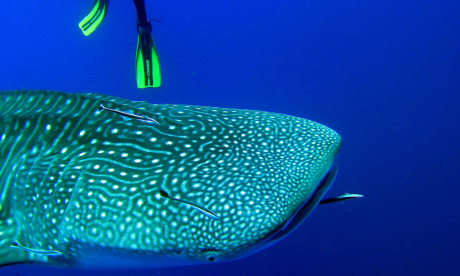
A tourist trap doesn't sound like the best place for whale- and dolphin-watching – but it is, says Mark Carwardine
I’m a cold person. The colder the better. My favourite stomping grounds are places such as the Antarctic Peninsula, Arctic Canada and Iceland. I love the wildlife, the challenges of the weather, the ever-changing light, the ice and snow... even the need to wrap up warm. Most of all, I love the uninterrupted elbow room. Cold and remote generally means quiet and alone.
Yet one of my favourite wildlife destinations is the Maldives. I know 40°C doesn’t exactly count as cold and that resorts full of tourists don’t conjure up an image of solitude. The 1200 small coral islands (most can be walked around in less than an hour) may form the picture-postcard paradise, but they hardly count as wilderness.
The real wilderness in this extraordinary country, where more than 99.5% of its territory is water, lies further offshore. The Maldivian reefs are teeming with life and, so far, more than 1100 species of fish and 250 corals have been recorded in the archipelago.
At the right time of year – May is my favourite – it’s also a world hotspot for whale sharks. With a bit of luck, you can snorkel with as many as four of these giant feeding machines in a single day.
But my interest in the Maldives lies even further offshore. Splashed across the Indian Ocean, 650km south-west of the southern tip of India, this is one of the best places in the tropics – perhaps even the world – for watching whales and dolphins.
The sheer variety of species is certainly world-class, from playful spinner dolphin and elusive rough-toothed dolphin to huge schools of melon-headed whale and fluking sperm whale. Yet, strangely, it seems to have gone unnoticed by most whale watchers.
For those of us in the know, of course, that’s good: without the sheer volume of whale-watchers more familiar in other parts of the world, it’s possible to sail for hours or even days without seeing another soul.
Another great measure (and pleasure) of real wilderness is complete and utter darkness. Straddling the equator, well away from the bright lights of big cities, the Maldives welcomes visitors with pure darkness for 12 hours every day of the year. Dozens of dots barely visible to urban dwellers in other parts of the world become hundreds or even thousands of bright, sparkly stars. A real wilderness treat.